Just before we were about to head to Sa Pa, I got the news that my Grandad, Reginald Phillips, had passed away. He was an active man for a ninety year old, having swum daily until recently, and his antics sometimes made us wonder if he was actually fifty years younger! He’s been following our travels from home, having travelled extensively in his life – during the war in the Merchant Navy, and then later on a couple of round-the-world cruises.
Hearing the sad news has made me think of the many stories he told us grandchildren of his visits to far-flung places: of changing ships in New Zealand to find his prior vessel sunk a week later; of sitting on the same bus his brother had done a week before on the other side of the world and being recognised and taken in by friends; and of the delights of walking in the Catskill Mountains in New York State on shore leave during the war. As we continue our own adventure, I’ll be thinking of him on his and the message of friendship he spread through his involvement with the YMCA and throughout the world.
Sa Pa is a hill station set in the mountains in Vietnam’s far north-west, near the border with China. It’s famed as the cultural crossing point of many of the indigenous minority peoples of the northern highlands, and the best way to get a taste of what life is like for those still living a very traditional existence.
For us, Sa Pa was also the cause of some trepidation, as our train was due into the nearby town of Lao Cai at six in the morning, and we’d been told to expect scammers on the one hour minibus journey up the mountain. It’s the same trick of overcharging we’ve heard elsewhere – either charging a ridiculous rate to the unsuspecting foreigner, or quoting a reasonable price and then on arrival revealing it to be US dollars and not Vietnamese Dong – hence inflating it by a factor of twenty. Armed with the right price for the journey (50,000 vnd), we were relieved to immediately find an honest driver and soon be on our way. I think it says something for expectations that after this apprehensive start, we fell in love with Sa Pa, and left sad not to have been here longer.
The cool mountain air, calm streets and bright tribal costumes for me quickly brought back memories of time my friend Roland and I spent in Huaraz in Peru, trekking in the Andes. As a quick respite from the night’s journey, we settled in to breakfast at a brilliant place Laura honed in on – appropriately called Baguettes and Chocolate, and then struck out for the day.
Women from the local minority villages supplement their income by being guides for tourists, and we found our guide Mai through her friend Ying (http://hmongtour.wordpress.com). The different tribes are recognised by their colourful dress, with the Black Hmong wearing dark blue tunics embroidered in greens and red, black headbands and velvety socks around their ankles. The headgear differs greatly between the different minorities, with some
wearing stark bright red headpieces and others in shades of green. Although her family still lives in the valley, Mai’s life has recently taken a more westernised turn, as she fell in love with a trekker from Belgium and has just spent a couple of months in Brussels with her fiancé – it sounded like it was quite a contrast to the life she’d led here! She’s hoping to get married next year and move away permanently, but for the time being is in Sa Pa and was being continually welcomed back by various friends we bumped into along the way.
As we walked down into the valley beneath Sa Pa, we were treated with a vista immediately reminiscent of Nepal. Stretching into the far distance were the familiar etched contours of thousands of rice paddies, each a tiny glimmering reflection of the bright blue sky, surrounded by an edge of greeny-brown. Up close, the mirrored sky in the paddies is punctuated by barren rice stems, harvested a few months ago and now left to wither in the water, creating an eerie silhouette.
Between the paddies are a web of streams and small waterfalls feeding them. Shade is provided by towering thickets of giant bamboo, which in places have been felled and cut in half to redirect the water along makeshift aqueducts. These drinking water streams end up outside houses, providing a continually running water supply that we’ve also seen while trekking elsewhere. The houses themselves are simple constructions of woven bamboo with either a bamboo or corrigated iron roof, and an indoor cooking area over an open fire.
Mai showed us how the villages go about living off the land, pointing out the corn husks drying for seed next season, and the indigo plants they use to dye their clothes. Laura had a go at dyeing and for half a day her hands turned green making her look like the incredible hulk! They use hemp for their clothes – something which has never really taken off in the west due to the stigma from marijuana in spite of its relative strength over cotton. I was also intrigued to see how they’d made use of water power to de-husk their rice, with the flowing water periodically tipping a bamboo pole, lifting a stone which then dropped into a bowl to separate out the rice.
At night we slept in a ‘homestay’, essentially a mattress on the floor of a building adjoining the family home. Best of all, this meant that as the darkness closed in outside, we were able to curl up around the communal fire and watch as food was prepared. It seemed our hosts were trying to compete with the scenery outside, as mountains of flavoursome goodness were crafted before us – which we then gleefully got to eat along with the family and the handful other westerners staying there. There was about three times too much food, which they then ate for breakfast the next day.
Our route out of the valley was a little speedier than our arrival; we each hopped on the back of a motorbike for an exhilarating journey back up to the town, a thrilling ride and certainly more fun than taking the bus!
As we’d been walking into one of the villages this morning, Mai had introduced us to some of her friends who were returning with empty baskets having delivered an offering to a house up the hillside. We could hear the chatter of a celebration as we approached, and she told us it was a wake to mark the anniversary of the death of a woman three years ago. The celebration made me think of my Grandad, and how he really fully lived his life, and how much he loved us grandchildren. As we later sped through the valley on our motorbikes, I thought of the many journeys he’s been on, and how he’d smile to hear of what we were up to now, sailing through beautiful hills in the sunshine – and living out our dreams. I hope he’s able to do the same where he is now.
Simon

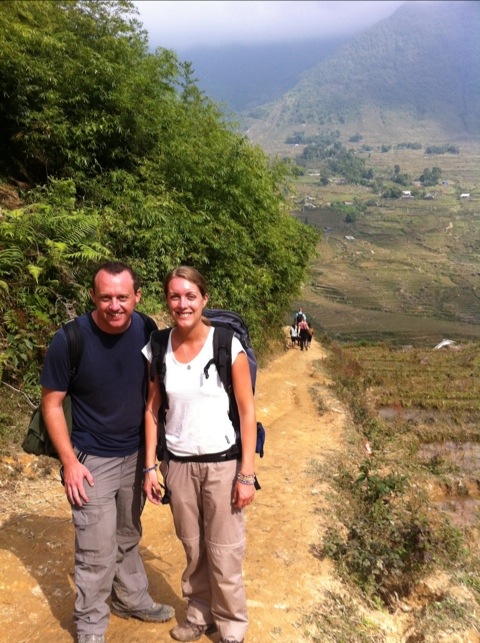
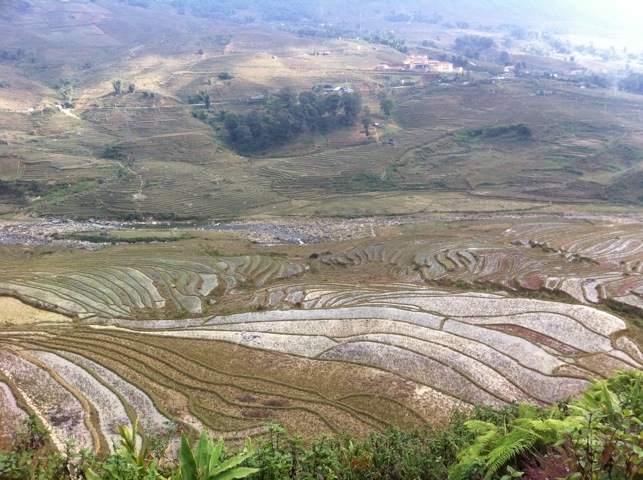
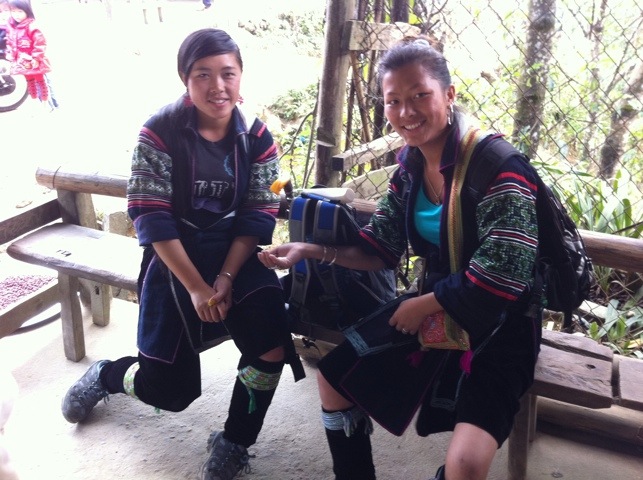
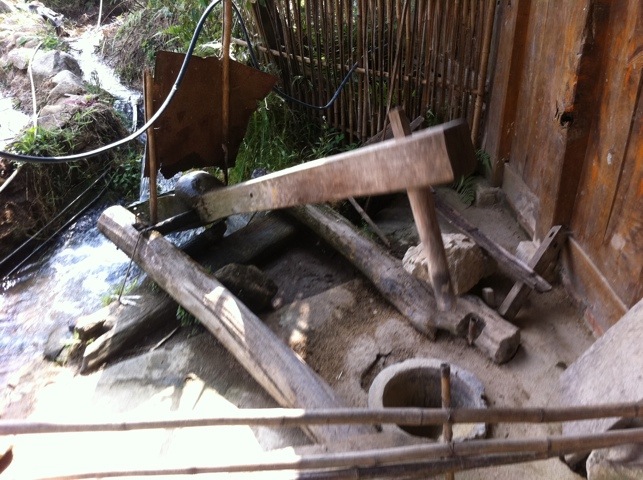
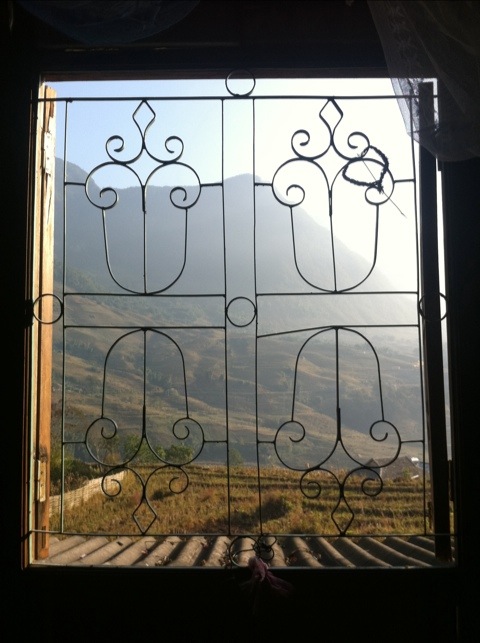
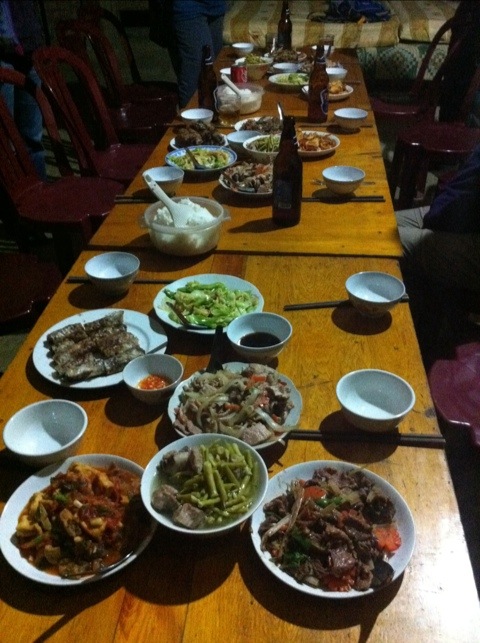
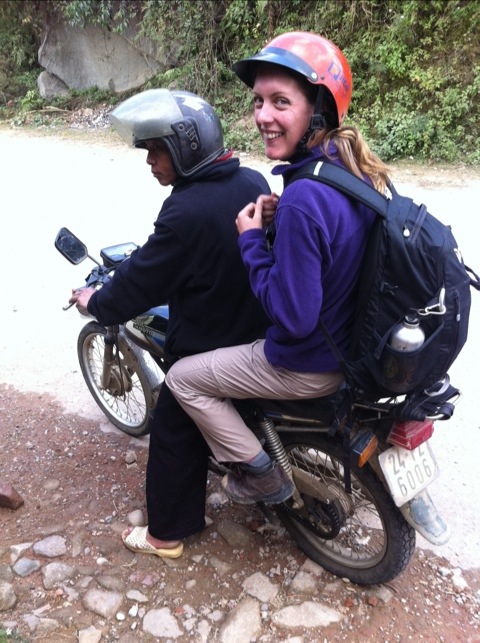
nice bit of engineering there 🙂
He would have loved to trace your journey in Vietnam in the Atlas and would have been reassured by the photos that you are still well and happy.